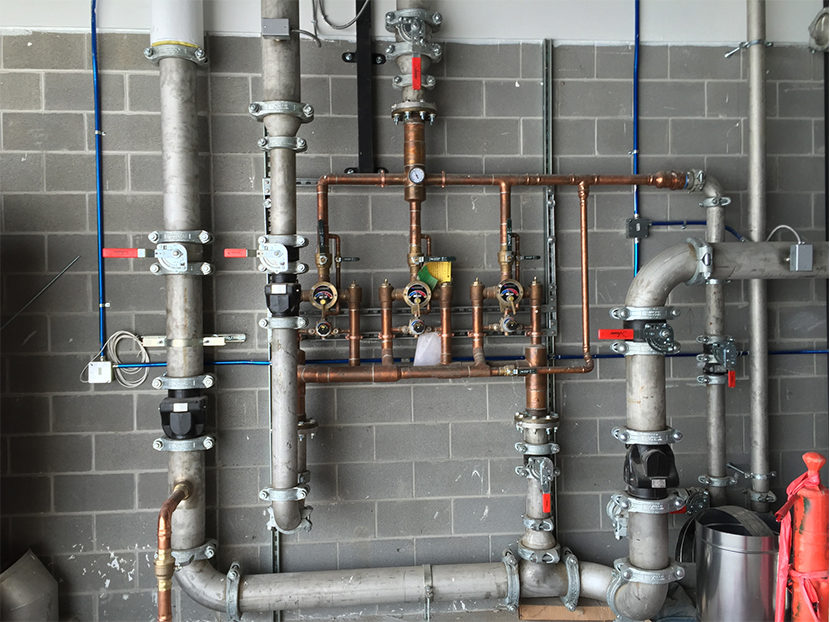You’re ready to make some coffee, but one turn of the faucet handle snaps you wide awake because your water pipes are frozen, and the next step is to find ways to unfreeze your water pipes.
If you wait long enough, will those frozen pipes thaw on their own? If they don’t, how careful do you have to be when you start to unfreeze your water pipes?
No matter how many times you’ve dealt with pesky frozen pipes, it’s never easy to unfreeze your water pipes.
Let’s dive in.
HOW TO TELL WHERE PIPES ARE FROZEN
Locate frozen pipes by identifying what doesn’t work.
Whether it’s a kitchen faucet that doesn’t deliver water or a toilet that doesn’t refill, inspect plumbing backward from that point.
- Look for condensation or a light coat of frost on pipes.
- Tap pipes with a small tool, and listen for a solid sound.
- Touch pipe surfaces to locate extreme cold spots.
Take a good look at pipes in the basement and plumbing in crawlspaces. Be sure to check the water main coming into the house, and don’t forget outside faucets.
HOW TO UNFREEZE YOUR WATER PIPES
Ask a dozen homeowners how to unfreeze your pipes, and you’ll get a dozen different takes on everything from tools to techniques.
It’s not all wrong, but it’s not all right either.
If you haven’t prepped the pipes for winter yet to make it easier to unfreeze your water pipes, you can still be ready for frozen plumbing headaches.
HOW TO THAW A DRAIN PIPE
Before you start to unfreeze your water pipes, shut off the water supply to the section of plumbing you’re working on.
These three techniques are effective for thawing out most frozen drain pipes:
- Thaw pipes with a space heater or heat lamp positioned at least 3 feet away from flammable materials.
- Use a hair dryer to direct warm air up and down frozen pipe lengths.
- Wrap frozen pipe with an electric heat cable, and keep a close eye on the process.
These thawing strategies work on any plumbing that’s easy to reach including pipes in basements and crawlspaces.
HOW TO THAW FROZEN PIPES IN A WALL
Locate and turn off your home’s main water valve before trying to thaw frozen pipes inside a wall.
This kind of plumbing problem is harder to fix than frozen drain pipes because your options are limited:
- Turn up the furnace, and open closets and cabinets adjacent to frozen pipes.
- Position a fan heater to blow directly into wall vents located near frozen pipes.
- Cut a hole in the wall exposing pipes, and follow the techniques outlined in the previous paragraph.
HOW TO THAW EXPOSED PIPES
Exposed pipes in the basement and supply lines under sinks can usually be thawed in a few hours. If you’re thawing pipes under a sink, be sure to open the faucet so that melting water can escape.
Unfreeze your water pipes in the basement and under sinks first.
HOW TO THAW ENCLOSED PIPES
Knowing what to do when your pipes freeze doesn’t always make it easy. Most home plumbing systems stretch through spaces that are hard to access. You can’t always reach a frozen pipe by opening up a wall or working under the sink.
If you’re dealing with pipes frozen inside enclosed areas like crawl spaces, it’s best to call in restoration pros to help you unfreeze your water pipes.
HOW TO THAW FROZEN PIPES OUTSIDE
When you’re deciding on how to thaw a frozen outdoor faucet or exterior pipes, stay safe. Heat tape and hair dryers both get the job done, but be careful using electrical equipment outdoors when it’s wet.
If you’re not comfortable with your options, wrap the pipe or open hose bib with towels. Heat up a teakettle, and slowly pour hot water over the towel wraps.
It may take several tries, but this trick is safer than working with electricity while you’re standing in the snow when trying to unfreeze your water pipes.
HOW LONG DOES IT TAKE FOR PIPES TO UNFREEZE?
Fortunately, most DIY methods to unfreeze your water pipes gets the water flowing again in 30-40 minutes.
You might be tempted to wait for the pipes to thaw out by themselves. But keep in mind:
Depending on the weather, the process can take days. Pipes typically don’t freeze until the temperature dips to 20 degrees Fahrenheit. By then, the water becomes solid in pipes and exerts pressure that can measure 40,000 PSI.
Still, the time it takes to unfreeze your water pipes depends on how long your pipes have been frozen and where they’re located.
WILL FROZEN PIPES THAW ON THEIR OWN?
The short answer is yes, but the longer they stay frozen, the more likely they are to burst.
If you’re ready to tackle them on your own, these next steps outline everything you need to know on how to unfreeze your water pipes.
HOW TO PREVENT FROZEN PIPES
This time of year, most residents are thinking about how to deal with frozen water pipes. You can’t always stop it from happening, but these tips can reduce the chances of pipes freezing and bursting inside your home or business to avoid learning how to unfreeze your water pipes.
- Turn up the thermostat, and circulate warm air through every room by leaving interior doors open.
- When temperatures plunge, let faucets drip to prevent hot and cold water pipes from freezing.
- Move warm air through the kitchen and bathrooms by running fans and directing them toward open cabinet doors.
- Keep cold air from seeping into walls by upgrading insulation and resealing window and door frames.
- Disconnect and drain hoses, insulate outdoor pipes, and cover faucets before the first freeze hits.
